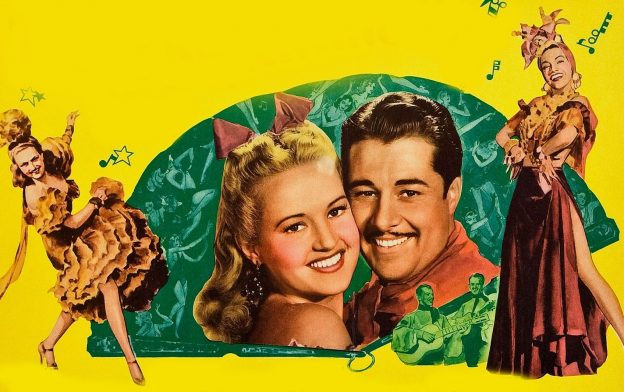“Down Argentine Way” is a love story between Ricardo (the Argentinian boy) who crosses the border to sell his horses in the USA and Glenda (a beautiful American girl) who is looking to buy the horse; but once Don Ricardo understands that the girl has the Last name of Crawford, he changes his mind.
Undoubtedly, this movie is not a masterpiece. The only admirable things about this film were the musical piece of Carmen Miranda and the amazing dance of the Nicholas brothers. Miranda’s parts, with coquettish face emotions and her body language in seductive red, were catchy. These could be recognised as a good advertisement for both Miranda and the Nicholas Brothers; however, these were not interwoven into the narrative of the movie. Therefore, neither the songs nor the dancing performances advanced the plot and neither helped develop the main characters. Regardless, these musical scenes could serve as breaks in the storyline or, merely, as a touristic advertisement for Argentina. In “Down Argentine Way”, the role of Americans (Glenda and her aunt) are more important and centric. They are always in the middle of the scene and take the leading role with their impressive moves, while Argentinian spectators are standing to watch, enjoy, and admire them. This is heightened during the song “sing to your señorita”, where Binnie dances in the middle of the villagers which emphasises the sense of superiority of Americans over the Argentinians in a more tangible fashion.
In this movie, like the movie “Flying Down Rio”, Argentina is defined by its seductive and charming people, splendid, and lavish lifestyles, place of night life, clubs, dance, romance and so on. Director had filled his shots with exuberant images and exaggerated lifestyle. When Ricardo says, “in this small village you can find the true Argentina”, he means that here lies passion, and happiness filled with the music, rumba, and colours. Argentina appears with all sorts of exaggerations from 1940; While Argentina continues to be neutral during WWII, it is being pressured from other countries.
The theme of freedom was another theme for this movie which could be implied from the horse-riding. In this film, horses symbolised the power and grandeur of Quintana’s family or Argentina. The rebellion and glory of horses are metaphors for Ricardo. Binnie also mentioned this twice; once when Glenda was watching Ricardo’s riding, and said “- it’s wonderful.” And Binnie asks, “The animal or the beast?”, and again in another scene said, “South America has wonderful horses and wonderful men”. Horses are symbols of freedom and rebellion in south America; also, riding a horse gives the sense of being free. Just like the previous movie, “Flying down Rio”, the honor of the family in which Don Ricardo must obey his father was interesting, but at the end, he rebelled and participated in the horse riding without his father’s permission.
The shadow and hegemony of the north America are also evident throughout the language. English is a common language in Argentina; but the fact that Quintana’s family talks English in their home with each other, or the stable boy talks with a horse in English, was ridiculous. The only Spanish words which were repeated along the movie and were indicators of their origin were: señor, Señoria and Don. These are indications that Argentina was not truly represented in this movie.
In my view, “Down Argentina Way” is much more about the actors than the clichéd happy ending story. The story ends with everyone turning out to be happy, with vibrant colours and luxurious mise-en-scene, which add a high energy to the movie.

When I heard Aunt Binnie singing in the middle of the villagers I was somewhat confused. She loves being in Argentina and wants to fit in, and danced the part to a degree. But her singing in Rogers and Hammerstein style, or American trying to be cultured, is a distraction from the rich village celebration we are trying to enjoy. Binnie would fit in more if she sang a village song or at least went along with the style.